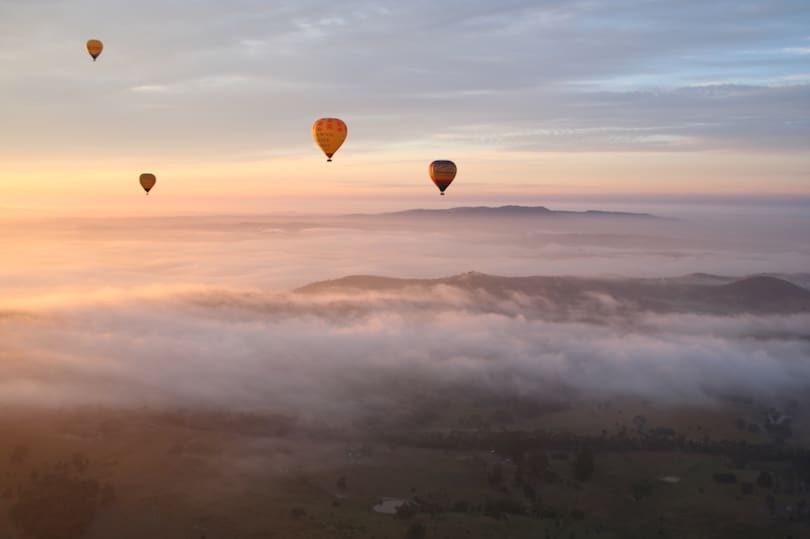Teotihuacan is an ancient Mesoamerican city located in the Basin of Mexico, about 30 miles northeast of modern-day Mexico City. It was once the largest city in the pre-Columbian Americas, and its pyramids and ruins are among the most impressive in the world. In this article, we will explore the 9 most beautiful Teotihuacan pyramids and ruins, providing readers with an in-depth look at these incredible archaeological sites.
The history of Teotihuacan
Teotihuacan was founded around 200 BCE and reached its peak in the first half of the first millennium CE. At its height, the city was home to over 100,000 people and covered an area of more than 20 square kilometers. The city was abandoned around the 7th century CE, and its ruins were rediscovered in the 19th century. Today, Teotihuacan is one of the most popular tourist destinations in Mexico.
The Pyramid of the Sun
The Pyramid of the Sun is the largest pyramid in Teotihuacan, and it is one of the largest pyramids in the world. It is believed to have been completed around 200 CE, and it is estimated that it took over 10 million man-hours to construct. The pyramid is over 200 feet tall and covers an area of 225,000 square feet.
The Pyramid of the Moon
The Pyramid of the Moon is the second-largest pyramid in Teotihuacan, and it is located at the northern end of the city’s main avenue. It is believed to have been built around 450 CE, and it is estimated that it took over 3 million man-hours to construct. The pyramid is over 150 feet tall and covers an area of 130,000 square feet.
The Temple of the Feathered Serpent
The Temple of the Feathered Serpent is a smaller pyramid located near the center of Teotihuacan. It is also known as the Temple of Quetzalcoatl, and it is believed to have been built around 250 CE. The temple is decorated with intricate carvings of snakes and other animals, and it is one of the most ornate buildings in Teotihuacan.
The Palace of the Jaguars
The Palace of the Jaguars is a large residential complex located in the southern part of Teotihuacan. It is believed to have been built around 400 CE, and it is named after the jaguar-shaped figures that decorate the building. The palace covers an area of over 100,000 square feet and contains more than 500 rooms.
The Palace of the Quetzal Butterflies
The Palace of the Quetzal Butterflies is a smaller residential complex located near the Palace of the Jaguars. It is believed to have been built around 400 CE and is named after the intricate carvings of butterflies and birds that adorn the building’s walls. The palace covers an area of over 60,000 square feet and contains more than 200 rooms.
The Citadel
The Citadel is a large complex located at the southern end of the main avenue in Teotihuacan. It is believed to have been built around 350 CE and is surrounded by a massive wall that is over 30 feet tall. The Citadel contains a number of structures, including a large open space that was likely used for ceremonial purposes.
The Marketplaces
Teotihuacan was a major commercial center in ancient Mesoamerica, and the city contained several marketplaces where goods were bought and sold. The marketplaces were located near the main avenue and covered an area of over 10,000 square feet. Archaeologists have uncovered evidence of a wide variety of goods being sold in the marketplaces, including pottery, obsidian tools, and exotic goods from distant regions.
The Residential Areas
In addition to the pyramids and public buildings, Teotihuacan contained a number of residential areas where the city’s inhabitants lived. The residential areas were located throughout the city and were built around a central courtyard. The houses in the residential areas were typically single-story structures made of adobe and had thatched roofs.
Conclusion
In conclusion, the Teotihuacan pyramids and ruins are among the most impressive archaeological sites in the world. The city’s pyramids, temples, and public buildings offer a glimpse into the lives of the people who lived in the region more than a thousand years ago. If you are planning a trip to Mexico, a visit to Teotihuacan is a must-see attraction.
FAQs
- How long does it take to explore Teotihuacan? A: It typically takes 3-4 hours to explore the main attractions in Teotihuacan, but visitors can easily spend an entire day exploring the site.
- Are the Teotihuacan pyramids safe to climb? A: Yes, the pyramids are safe to climb, but visitors should be cautious and use the provided stairs to avoid injury.
- What is the best time of day to visit Teotihuacan? A: The best time to visit Teotihuacan is early in the morning or late in the afternoon to avoid the crowds and the heat of the midday sun.
- Can I hire a guide to explore Teotihuacan? A: Yes, there are many licensed guides available at the site who can provide visitors with a wealth of information about the history and culture of Teotihuacan.
- How old are the Teotihuacan pyramids and ruins? A: The pyramids and ruins at Teotihuacan are over a thousand years old and date back to the pre-Columbian era.










